1:3 lighting ratio – Nikon D5, Nikon 85mm ƒ/1.8G, ISO 100, ƒ/5.6, 1/200
When I teach lighting, I always teach the 1:3 lighting ratio. After I show how you set up the leading light and the fill, I show them some ways to change the background quickly using gels.
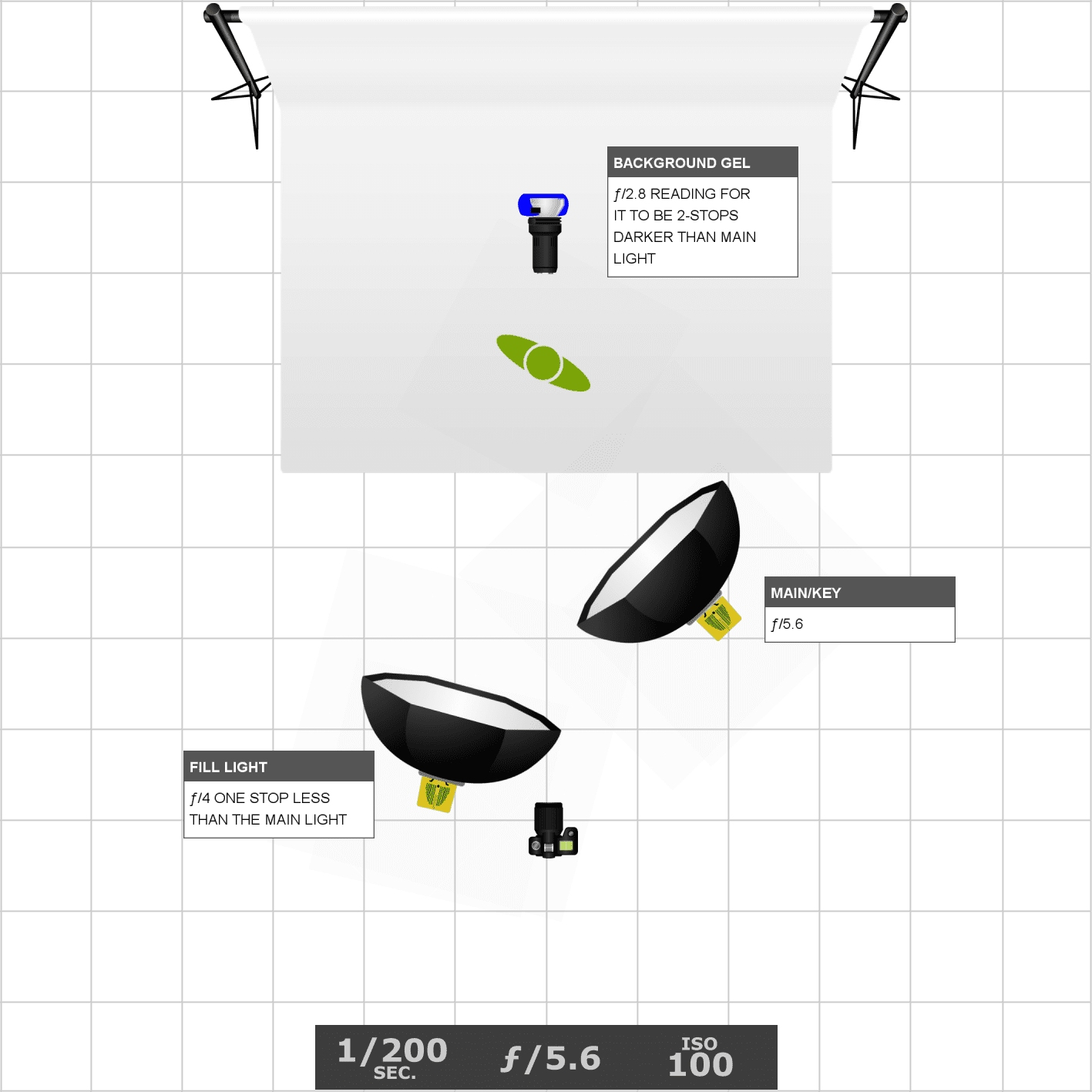
Now before I add the gel, I shoot this photo where the subject is on a white background. I will shoot with just the leading light and the fill light and then put both lights on with no background light so that the students can see individually what each morning is doing.
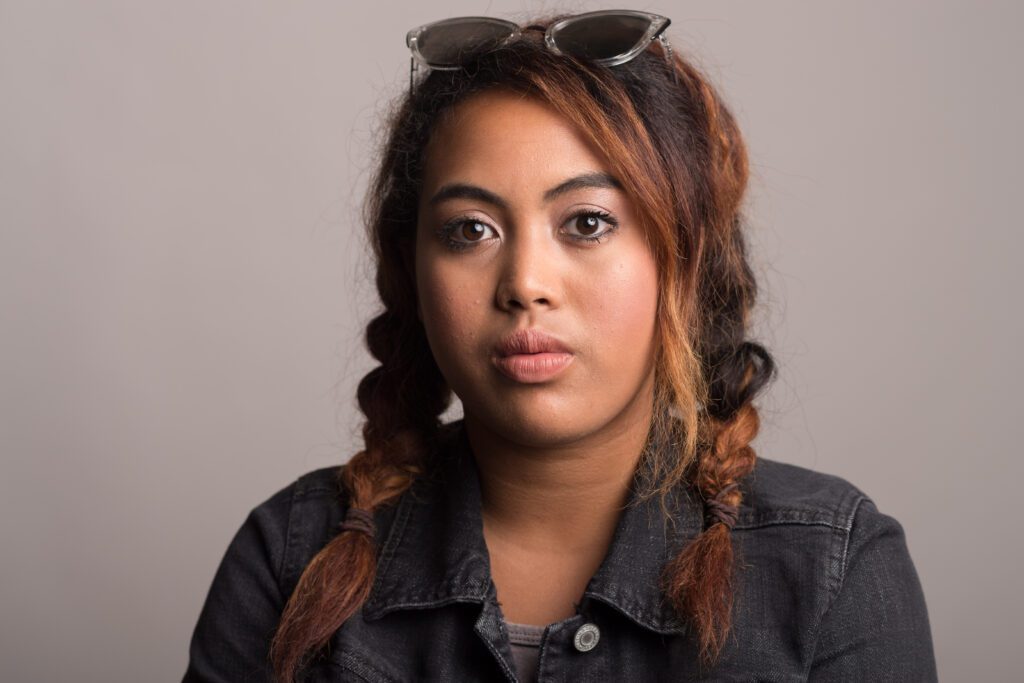
Now I will turn the main light off and then turn on just the fill light.
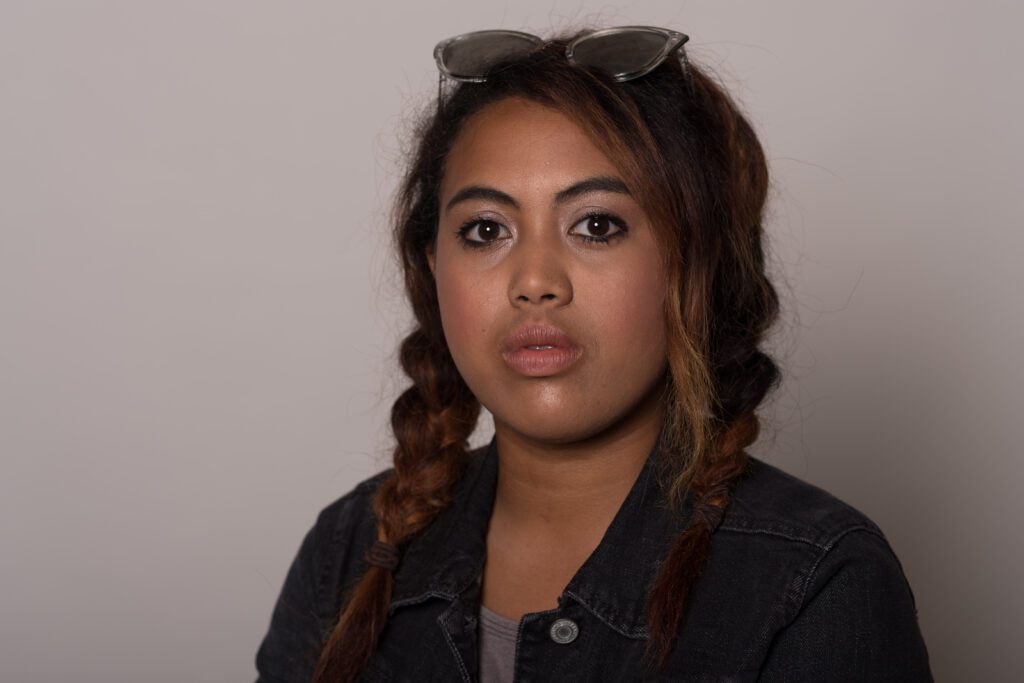
Now for the main light it was measured for ƒ/5.6. I didn’t change the exposure on the camera I just shot the fill light at ƒ/4 to show it is darker than the main and where the direction of the light is coming and how it affects the model’s face.
Then I combine the two lights.

Then we talk about how she is in front of the white background, but it looks like a light gray.
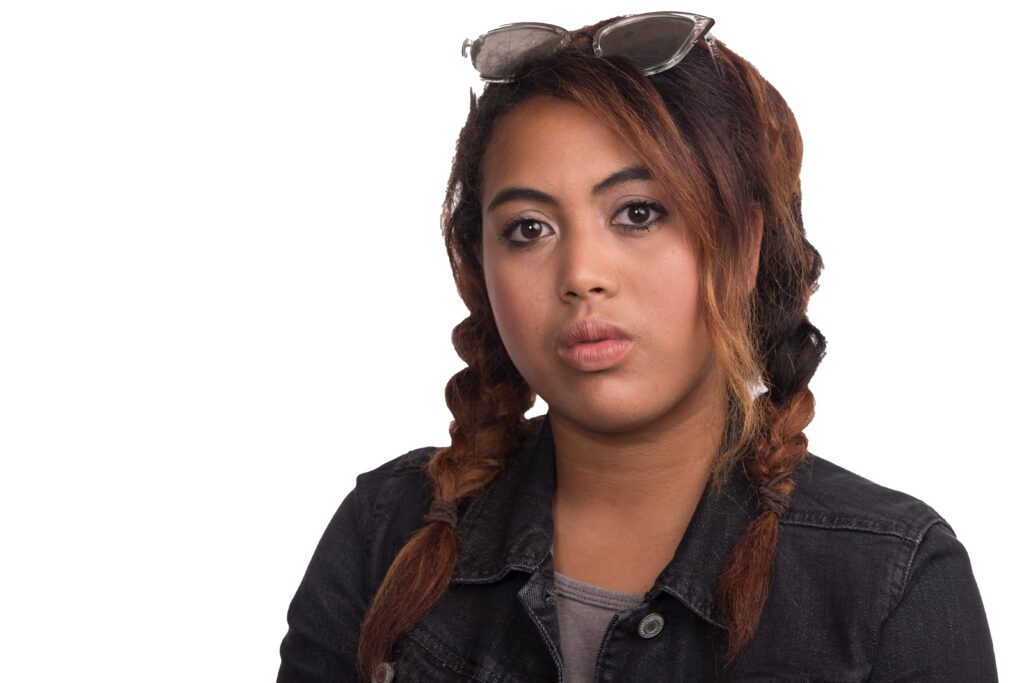
I put two lights on the background and then measured the light so that it was about one stop brighter than the main light. So the background here is ƒ/8.
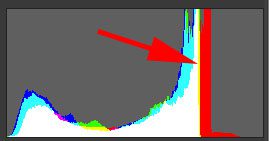
This is the histogram without the background light. On the furthest right on the histogram, you can see that the value is a good amount away from the far right.

This is the one where I have the background light set at 1-stop brighter than the fill. Notice that most of the histogram is the same, but the far right is on the far right. This shows how the white value is recorded. If you are not butting up on the right, there will be a bit of gray or often a tinge of blue when you print out the photo in the background.
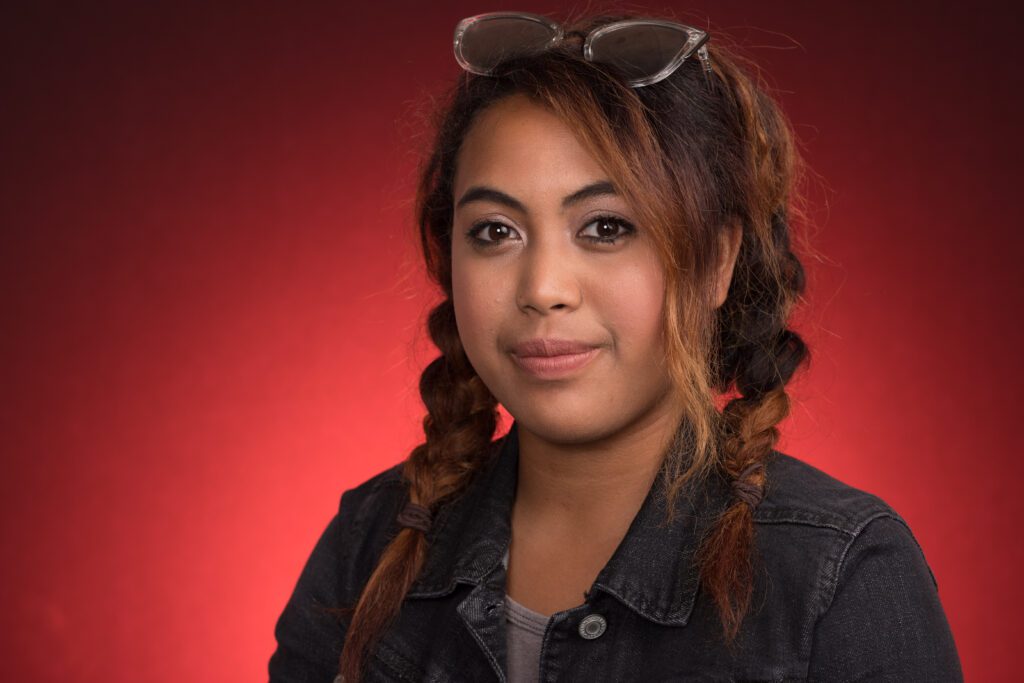
Now when I add the gels like this red or the blue above, we take a light reading of the background. We want the value to be 2–stops darker than the leading light. So here, the background is measuring ƒ/2.8.
You will notice that you need to move the person away from the background when using white for a background.
Now I demonstrate this by using a black background to make the color look like this; you need to be sure the background is 2–stops brighter than the leading light. So if this red background were black with the gel on it, the reading would be then ƒ/11, which is 2–stops brighter than the ƒ/5.6 of the leading light.

